We are told WWI started as a result of the assassination of Archduke Franz Ferdinand and his wife in Sarajevo on June 28, 1914. In less than a month the Austro-Hungarian empire declared war on Serbia, starting a global conflict that cost 15 million lives.
Decades before WWI began, the New World Order recognised their global domination plans were jeopardised by German and Russian industrial and economic power. First and foremost Germany needed to be destroyed. However, the British establishment knew that Britain’s maritime power alone wouldn’t get the job done and were concerned about Germany’s growing naval capability. They needed considerably larger land forces if they ever hoped to defeat the German military in a European war.
They required the support of both France, Russia and most importantly the U.S. to be certain of defeating Germany. However, having narrowly averted a war with France in 1895 Anglo-French relationships weren’t good. So King Edward VII (close confident of Lord Esher, Pilgrims Society and NWO ‘Society of the Elect’ member) was dispatched to do some bridge building. In April 1904 Britain and France signed the ‘Entente Cordiale’ and the Anglo-Russian Entente on 31 August 1907. This was called the ‘Triple Entente.’ It was supposedly based upon trade and shared interests of empire. However, at the same time, Britain agreed a mutual security pact with France. Foreign Secretary Sir Edward Grey later referred to these as ‘conversations.’
In order to strike a deal with Russia, Britain offered them Constantinople and exclusive control of the Black Sea Straits. Csar Nicholas II had long wanted to secure Russian control over naval access to the Mediterranean, en route to the Southern Atlantic. However, neither the British NWO elites nor their U.S. counterparts, had any intention of allowing this. They had very different plans for Russia.
By 1910 the NWO had carefully selected and secured the compliance of politicians in each of the major political parties; they had established control of British and U.S. foreign policy, irrespective of government; they had recruited the increasingly influential press-barons into their ranks and could influence all avenues of information to create and control public opinion. Their funding of university chairs, scholarships and lecturing posts gave them a complete monopoly over the writing and teaching of history and political science. They controlled the British Foreign Office, the U.S. State Department, the British Colonial Office and were deeply embedded in the civil services of both countries. The British War Office and the Committee of Imperial Defence were theirs. They controlled the U.S. War Department and Navy Department, completely dominating the military establishment on both sides of the Atlantic.
British democracy was already a farce. A sop for the masses in order to keep them interested in something which had no practical significance, namely party politics. ‘Bread and circuses.’ In truth, since the mid 19th century, British politics were controlled by a small group of elite families and their chosen establishment. The sometimes brutal struggle for power was real enough, but it had nothing to do with partisan loyalties. When the Conservatives lost power on 1905, Lord Alfred Milner had already selected their Liberal Successors. Herbert Asquith (Earl), Richard Haldane (Viscount) and Sir Edward Grey were chosen by Milner. All imperialists, all establishment and all with close ties to the NWO. Grey moved into the Foreign Office and Haldane the War Office. Within two years Asquith was Prime Minister. Campbell-Bannerman’s 1906 landslide Liberal election victory meant nothing to the NWO. They controlled all sides of the board.
Milner set about a concerted global propaganda campaign, ably assisted in Britain by Viscount Northcliffe (Alfred Harmsworth,) a press baron and propagandist who brought media to the masses through his newspapers the Mail, Mirror and the Times. While Northcliffe flooded Britain with anti-German propaganda, Milner set about securing international military support from the far reaches of the empire. He convened the Colonial Conference in 1907 and heaped praise upon the Australian and New Zealand establishment, securing a fundamental reorganisation of their military, aligning them firmly to the ‘mother country.’ Milner also undertook a wide-ranging tour of Canada in 1908, proclaiming them a shining example of loyalty to the empire. He convened the ‘Imperial Press Conference’ in 1909, inviting more than 60 influential journalists, editors and press barons from across the British Empire to ensure they were of one opinion. He visited munitions and armaments factories in Manchester and the Glasgow shipyards, building the new Australian navy. All the time consistently increasing public fear of the looming German threat and extolling the glory of empire.
As Austria squared up to Serbia, adhering to the Milner Group’s plan, Russia started huge troop deployments on Germany’s eastern front with the full support of London and Paris. The French mobilised on Germany’s Western border and, despite Kaiser Wilhelm’s pleas to his cousin, Csar Nicholas II, to stand down his army, war was soon inevitable. Boxed in, Germany had little option but to mobilise their army as a defensive measure. Germany were the last major power, not the first, to mobilise in mainland Europe prior to WWI.
Maintaining the pretence of parliamentary democracy Sir Edward Grey told parliament that war wouldn’t be declared without a parliamentary vote. However, he knew that Belgium presented the Germans their only realistic hope of outflanking the amassed French Forces. Even for Germany, a toe to toe fight with Russia was highly undesirable. The vote never came as Germany invaded Belgium, just as Milner knew they must, in August 1914. The NWO had their war to destroy German power and establish control of Europe.
The U.S. public had no desire to get involved. In 1914, President Woodrow Wilson declared U.S. neutrality. However, the NWO had already seized control of the economy through the Federal Reserve Act, a year earlier, in preparation for the war. J.P.Morgan made £2.3 billion (an astronomical sum in 1913) in loans to the Allied Nations of Britain, France and Russia. The banking cartel, who owned the Fed, were heavily invested in the project to seize German power. These loans then enabled the Allied Nations to buy arms and military equipment from the U.S. manufacturers for corporate war profits.
Despite their immense wealth, the U.S. financial elite couldn’t risk a German victory either. The U.S. entry into the war was required. The NWO also had plans to capitalise on social and political changes sweeping through Russia. Destabilising Russia in the short term made U.S. entry into the war even more vital. However the American electorate were largely opposed to joining what they saw as a European conflict. The will of the U.S. people needed to be changed. Therefore, in an attempt to shift U.S public opinion, the NWO elites, including Pilgrim Society member and First Lord of the Admiralty Winston Churchill arranged ostensibly a false flag attack upon the J.P Morgan owned flagship the Lusitania.
However, while the loss of American lives on the Lusitania moved public opinion the nation was still divided with a slight majority in favour of maintaining U.S neutrality. The irony that surrounds the U.S.’ entry into the war in April 1917 is remarkable. British intelligence intercepted a telegram from the German Foreign Minister (Arthur Zimmerman) urging the Mexican government to fight the U.S. This was widely perceived by the American people as a British hoax. A ‘conspiracy theory’ in modern terms. It wasn’t, Zimmerman really did send the telegram, the Mexicans were totally bemused by it, but they received it nonetheless. Woodrow Wilson consequently declared war on Germany on the 6th April 1917.
Despite the fact that Wilson was elected in 1916 promising to keep America out of the war he did everything he could to ensure the opposite. This was largely because Wilson was wholly owned by the world banking cartel. Wilson’s opponent in 1916, Charles Evans Hughes, was wary of being seen as a warmonger, but a Republican victory would have certainly led to a U.S. declaration of war. Similarly, thanks in part to the duplicity of Wilson, Democrat success produced exactly the same outcome. No matter which way the U.S. electorate voted the powerful bankers, industrialists and corporation owners of the NWO had already decided the U.S. would be involved. The wishes of the U.S. population made no difference at all. The NWO never ‘loose’ elections.
Professor Carrol Quigley, who wrote the definitive exposé of the transatlantic corporate hegemony in his work ‘Tragedy and Hope,’ wasn’t necessarily averse to the objectives of the NWO but rather questioned their methods, described the NWO view of party politics he wrote:
“The argument that the two parties should represent opposed ideals and policies, one, perhaps, of the Right and the other of the Left, is a foolish idea acceptable only to the doctrinaire and academic thinkers. Instead, the two parties should be almost identical, so the American people can ‘throw the rascals out’ at any election without leading to any profound or extreme shifts in policy.”
[Carroll Quigly – Tragedy and Hope – p1247]
At the same time, April 1917, investigative journalist George Creel created the ‘Committee on Public Information’ (CPI,) with public relations experts Edward Bernays at the helm. They used their new psychological warfare techniques to win over public opinion, producing an almost total shift in perception. They played upon peoples emotions using slogans like “Remember the Lusitania, it is Your Duty to Enlist Today.” Freedom of speech was curtailed, and any dissent destroyed by the Espionage Act of 1917. Section 3 of the Sedition Act 1918 outlawed any criticism of the banks. If anyone said anything which questioned or undermined investment in war bonds, bank loans, security trading or “any thing or things, product or products, necessary or essential to the prosecution of the war,” they could be fined and imprisoned for up to 20 years.
While the NWO’s objectives are geopolitical, social and cultural they are not politically partisan. Members are drawn from both the right and the left of the political spectrum. Professor Quigley stated:
“There does exist, and has existed for a generation, an international anglophile network which operates, to some extent, in the way the radical Right believes the Communists act. In fact, this network, which we may identify as the Round Table Groups, has no aversion to cooperating with the communists, or any other group, and frequently does so.”
[Carroll Quigly – Tragedy and Hope – p950]
One of the things the NWO were investing in was the Russian Revolution. Both the extreme right and left of the political spectrum were, and are, collectivist. Nazis (National Socialists) and Communists alike advocated extreme centralised political power in order to operate planned economies, through force if necessary. They both required a monopolistic control of both the economy and society, as do the NWO.
U.S. financial interests had long supported the revolutionary forces inside Russia. Wall Street tycoon Jacob Schiff (head of Kuhn, Loeb and Company) funded influential journalist George Kennen to go to Japan in 1904 to radicalise Russian P.O.W’s during the Russo-Japanese war. Kennan later said he had convinced the Japanese authorities to support revolution inside Russia, and was allowed to distribute revolutionary literature and pamphlets among the P.O.W’s. Upon his return Kennan was instrumental in popularising support for the revolutionaries in the U.S.
Following the February Revolution that overthrew the Russian Czar, on March 23rd 1917, a huge meeting was held in Carnegie Hall in New York to celebrate the Czar’s abdication. Kennan wrote the following in the New York Times published on March 24th 1917:
“The movement was financed by a New York banker you all know and love, and soon we received a ton and a half of Russian revolutionary propaganda. At the end of the war 50,000 Russian [Russo – Japanese P.O.W’s] officers and men went back to their country ardent revolutionists. The Friends of Russian Freedom had sowed 50,000 seeds of liberty in 100 Russian regiments. I do not know how many of these officers and men were in the Petrograd fortress last week, but we do know what part the army took in the revolution.”
During the meeting, a telegram from Jacob Schiff was read out to the cheering crowds. It read:
“Will you say for me to those present at tonight’s meeting how deeply I regret my inability to celebrate with the Friends of Russian Freedom the actual reward of what we had hoped and striven for these long years.”
Of course the international bankers weren’t in the least bit interested in ‘Russian freedom,’ what they wanted was access to its huge natural resources which had been tightly controlled in Czarist hands. The New York Times reported there had been a rise in Russian transaction in the London markets prior to the revolution. Barely able to contain his joy, Jacob Schiff wrote his enthusiastic support for the revolution in the NY Times. The Wall Streets bankers funding of the bolsheviks was further substantiated through the research of Professor Antony C. Sutton in his book Wall Street and the Bolshevik Revolution.

The money behind the NWO was already global by 1917. Max Warburg ran the Warburg Banking House in Germany. Max advised the Kaiser to allow Lenin safe passage from Zurich to Petrograd in a ‘sealed train.’ In the U.S. his brother Paul protected the families interests in New York. These were both fronts for the London based banking giant N.M Rothschild & Sons.
Leon Trotsky briefly lived in New York during early 1917. He earned $15 per week as a writer. When he left for Russia in March, he was arrested en-route in Canada with $10,000 of U.S. gold in his possession and a passport issued by Woodrow Wilson. Paul Warburg was a close advisor of Wilson’s. London then instructed the Canadians to release Trotsky and provide him passage to Russia. The U.S. & Britain and Germany were supposedly at war, yet all three governments apparently collaborated to ensure the key revolutionaries, Lenin and Trotsky, arrived safely in Russia at the right moment. Not because the people’s elected governments were working together, but because the agents of the NWO were.
Prior to U.S. entry into the war, Czarist Russia had been extensively financed by the National City Bank, controlled by Stillman and Rockefeller interests, and the Guaranty Trust, controlled by Morgan interests. When the Bolshevik revolution came in November 1917, U.S. industrialist and financier William Boyce Thompson (a director of the Federal Reserve) had already funded and put in place an American Red Cross mission in Russia that was staffed predominantly by bankers and lawyers. The Red Cross mission, which had little to do with the Red Cross, was a front to enable the distribution of funds for the revolution. J.P. Morgan Company cabled $1 million dollars to National City Bank in Petrograd (now Saint Petersburg) in November 1917. The only bank exempted under the Bolshevik’s nationalisation decree.
Thompson left Petrograd in December, leaving his Deputy Raymond Robins in charge of the Russian mission. Thompson then set about drumming up support for the Bolsheviks. His first meeting, accompanied by Thomas Lamont (a J.P Morgan associate,) was in London with Liberal Prime Minister Lloyd George. The Prime Minister was already controlled by international arms dealer Sir Basil Zaharoff and, like most leading British politicians, founding member of the ‘society of the elect’ Lord Milner. Both Zaharoff and Milner supported the revolution.
Thompson and Lamont easily convinced Lloyd George that Lenin and Trotsky were essentially anti-German and that Russia was likely to become a neutral power under the Bolsheviks. The UK government’s primary fear was that Germany would exploit the turmoil in Russia. The subsequent report convinced the British War Cabinet to support the Bolsheviks. Lord Milner already had an agent in Russia, Bruce Lockhart, who was instructed to covertly support the revolution. Effectively, Thompson provided diplomatic and political influence for Lenin and Trotsky among Western government and financiers.
Thomas D. Thacher (Wall Street lawyer and Russian Red Cross mission member,) who was directly employed by Thompson, sent a cable to British media baron Viscount Northcliffe outlining the propaganda he should publish:
“…..the fullest assistance should be given to the Soviet government in its efforts to organize a volunteer revolutionary army.”
All of this is totally at odds with mainstream historical interpretations, which is why it is ignored. Nonetheless, why would a Wall Street & London City banking cartel support a revolution whose stated aim was to destroy them? The big prize was German economic power and the big fear was German economic influence in Soviet Russia. Milner, Morgan, Rockefeller, Rothschild and Thompson et al. wanted to capture Soviet markets and resources, but more importantly they wanted to stop Germany doing the same.
In 1920, H.G Wells (leading members of the Fabian Society and a founding member of the Round Table Group) spent time in Russia at the invitation of the Russian Trade Delegation. Also present was F.A. Vanderlip, president of National City Bank, and part of the 1910 Jekyll Island Group who drafted the Federal Reserve Act. Vanderlip was busy negotiating trade concessions with the Bolsheviks while Wells, remarking upon the large number of Wall Street capitalists in Russia at the time, wrote:
“. . Big business is by no means antipathetic to Communism. The larger big business grows the more it approximates to Collectivism. It is the upper road of the few instead of the lower road of the masses to Collectivism.”
At the Genoa Conference in 1922, The Western Powers tentatively acknowledged the legitimacy of the Soviet Union in return for some debt restructuring. History records the Genoa Conference largely as a failure. It wasn’t so for the bankers. It led to the USSR signing credit agreements with German (Weimar Republic,) French, British and U.S. private banks within 5 years. Given that the bankers were opposed to German influence this seems like another failure. However, by 1922, the NWO already controlled Germany and its destiny.
After WWI, the Paris Peace Conference at Versailles in 1919, set about dividing the spoils of war. The main focus was to cripple Germany. This was achieved by seizing German industrial capacity and imposing severe reparation payments and both economic and military restraints upon Germany. It also saw the first attempt to establish a world government, in the form of the League of Nations. Mainstream history suggests the League of Nations sprang from Point 14 of Woodrow Wilson’s ’14 Points.’ In reality Wilson didn’t write them. Wilson, his administration and his delegation to Paris, were completely dominated by the NWO financiers.
Wilson appointed Paul Warburg (vice chairman of the Federal Reserve and Rothschild representative) as his chief economic advisor at the conference, he brought banker Bernard Baruch and Edward Mandell House (his confident and economic hitman for the NWO bankers) as his personal advisory team. He didn’t invite a single congressional Democrat to attend, just bankers and their entourage. Both Ray Stannard Baker, Wilson’s official biographer and Charles Seymour, House’s biographer, later confirmed the bankers handed Wilson his 14 points, only allowing Wilson to redraft the document using his own phraseology. The LEague of Nations was purely a NWO project.
By 1919, the Anglo-American banking cartel had seized total control of both U.S. and British ‘democratic governments.’ A power they have never relinquished. The League of Nations itself was a disaster. Sovereign national governments had just sold their populations the idea they needed to die in order to defend their countries. Convincing the survivors they now needed to give up that sovereignty was too hard a sell even for Edward Bernays. However, as ever, the NWO were already planning ahead.
The Treaty of Versailles has been widely criticised by mainstream historians for creating the economic conditions that led to the rise of the National Socialists in Germany. While there is a lot of truth to this interpretation, once again, it overlooks that the Nazi’s could not have established the Third Reich without the assistance of the Anglo-American international banking cartel (the NWO.) The creation of the economic circumstances within Germany during the 1920s and 30s which facilitated the building of the Wermacht has once again been interpreted as a series of mistakes, accidents or the product of ‘short-sightedness.’ The consistent use of this ‘reasoning,’ whenever evidence emerges that reveals the bankers financing of all sides in major conflicts, tells us much about who controls the mainstream history we read. Frankly, it’s wearing very thin.
For example, the post WWII U.S. Senate hearing into ‘what went wrong,’ sometimes referred to as the Kilgore Committee, stated:
“The United States accidentally played an important role in the technical arming of Germany. Although the German military planners had ordered and persuaded manufacturing corporations to install modern equipment for mass production, neither the military economists nor the corporations seem to have realized to the full extent what that meant.”
Yeah, right!
Yet this is the interpretation almost universally accepted by the academic establishment. The evidence shows this was far more than an innocent mistake. It suggests the NWO banksters knew exactly who the Nazis were, assisted their rise to power, funded their war effort and profited both economically and strategically from WWII by financing both he Axis and the Allies. Let’s consider the ‘coincidental’ string of banking cartel ‘accidents’ that led to the creation, funding and arming of the Nazis.
Firstly, there’s the Treaty of Versailles itself which practically obliterated the German economy, largely due to the unnecessary burden of vast reparation payments. The Allies demanded annual repayment equivalent to a quarter of Germany’s entire yearly export earnings. Understandably Germany couldn’t meet the repayments so Belgium and France used this as an excuse to occupy the German centre of industrial production, the Ruhr. With the loss of their productive economy, the German people had no chance. This pushed the German economy into hyperinflation and the population towards desperation and hunger. A perfect breeding ground for extremism.
In 1924 the Allies tasked a group of bankers to restructure the German repayments. In return the Belgians and the French ceased their occupation of the Ruhr. A team led by U.S. banker Charles G. Dawes and J.P.Morgan backed industrialist Owen Young (president of the U.S. General Electric Company – GEC) created The Dawes Plan. This made a series of loans, from U.S. corporate investors, to Germany. The loans were administered through the so called ‘Committee of Experts.’ Leading members of the U.S. committee delegations included J.P. Morgan, T. W. Lamont (a Morgan partner) and T. N. Perkins (a Morgan banker.) The German committee delegations were led by Hjalmar Schacht (president of the Reichsbank – Germany’s Central Bank,) Carl Melchior (German banker) and A. Veogler (German industrialist for the steel giant Stahlwerke Vereinigte.)
The 1924 Dawes Plan required that Germany use the loans to produce exports to be used as payment. The 1928 ‘Young Plan’ required additional monetary repayment. German bonds were held by Wall Street financiers, who issued them to private U.S. investors, in order to make profit. Effectively Germany was mortgaged to U.S. private commercial interests.
The Dawes plan created three German industrial cartels each with boards dominated by U.S. (NWO) financiers and their representatives. Dillon- Read Co, Harris, Forbes & Co and National City Company were the primary investors. Allgemeine Elektrizitats Gesellschaft (German General Electric – A.E.G,) Inter-nationale Gesellschaft Farbenindustrie A.G (I.G. Farben) and Vereinigte Stahlwerke (United Steelworks) were the primary beneficiaries. Both the investment and industrial cartels were controlled by the Morgan-Rockefeller investment bankers. The New World Order again controlling all sides.
I.G Farben produced the base chemicals required for industrial production. Its economic power alone wasn’t the mechanism by which it could control pre-war and wartime German industry. Both the Weimar Republic and the Third Reich were dependant upon on it for industrial productivity. Similarly, Vereinigte Stahlwerke had a greater pig iron capacity than all other German steel producers combined.
I.G Farben and Vereinigte Stahlwerke collaborated to control the German war effort through their control of coal tar and chemical nitrogen. I.G Farben needed Vereinigte Stahlwerke’s monopoly of the coking process and Vereinigte Stahlwerke needed I.G. Farben’s chemical nitrogen. By working together between 1937 – 1938 they produced 95% of all German explosives. I.G Farben also worked closely with U.S. Standard Oil (Rockefeller owned) to produce synthetic petroleum (gasoline) both prior to and throughout WWII.
All of this was financed by Wall Street, however Morgan-Rockefeller investment interests didn’t stop at controlling German heavy industry. Their subsidiaries also helped German and Nazi manufacturing. Opel, a wholly owned subsidiary of General Motors (controlled by J.P. Morgan investors) and Ford A. G. (a subsidiary of the Ford Motor Company) produced the vast majority of Nazi tanks. In fact, General Motors, Ford, General Electric, DuPont and a number of other U.S. Companies supported the Nazi war effort.
The NWO capitalists who owned these companies, represented predominantly by J.P. Morgan firm, the Rockefeller Chase Bank and the Warburg Manhattan bank (Rothschild) were intimately involved in Hitler’s rise to power. For example, the directors on the I.G Farben board approved 400,000 RM loan to Hitler’s political fund in 1933.
The NWO banking cartel also controlled the Western military industrial complex. Electrical plants were obviously a major target for allied bombing raids on Germany. However, facilities owned by NWO corporations International General Electric (A.E.G) and International Telephone and Telegraph (I.T.T) were avoided, as far as possible. The ones destroyed were Brown Boveri at Mannheim and Siemensstadt in Berlin, because the NWO bankers didn’t own them. More than 20,000 British citizens died in London during the German ‘Blitz’ bombings raids. The Rockefeller owned U.S. standard Oil sold the Luftwaffe the tetraethyl lead additive that enabled their bombers to fly.
During the years of the Third Reich, the I.G Farben corporation grew into a monster, rapidly expanding into the world’s first example of what we would today call ‘Big Pharma.’ It owned coal mines, power plants, banks, research units and many other commercial enterprises. As the end of WWII approached, many key records were destroyed by the Nazis. However, a post-war investigation by the U.S. War Department concluded:
“Without I. G.’s immense productive facilities, its intense research, and vast international affiliations, Germany’s prosecution of the war would have been unthinkable and impossible……….The proof is overwhelming that I. G. Farben officials had full prior knowledge of Germany’s plan for world conquest and of each specific aggressive act later undertaken.”
I.G Farben was a global corporation which not only responded to Nazi requests it actively promoted and initiated many Nazi projects; it acted as a Nazi global intelligence gathering network (primarily through industrial espionage) and was instrumental in the rapid development and expansion of the German military. The U.S. directors of American I.G, a wholly owned subsidiary of I.G Farben (which was itself built and owned by NWO bankers,) included C.E. Mitchell (chairman of National City Bank and the Federal Reserve Bank of New York,) Edsel B. Ford (president of Ford Motor Company,) W.C. Teagle (director of Standard Oil) and Paul Warburg (first member of the Federal Reserve Bank of New York and Rothschild representative.)
I.G Farben developed, manufactured and distributed the lethal ‘Zyklon B’ used by the Nazis to exterminate people in their concentration camps.
An essential component of both the Dawes and Young plans was close coordination between the central banks involved in the deal. With further conflict planned, international financial relations needed to be protected. Sitting on the Young Committee, Hjalmar Schacht (Nazi financier) suggested the concept of the Bank for International Settlements (BIS) which was duly incorporated in 1930.
Throughout WWII bankers from across the world, including leading Nazi official Walther Funk, sat on its board of directors. It continued to meet, discuss and plan the post-war geopolitical reality it would control via a system of economic punishment and reward. German, Japanese and Italian bankers sat next to British, Russian, French and U.S. bankers without any disagreement at all. Millions of war deaths were a practical irrelevance. Instead of buying standard government gilts the privately owned Central Banks (coordinated by the BIS) took in war bonds (wartime gilts) as securities to finance the both the Allies and the Axis. The BIS then gathered the profits from those loans after the war and divided it amongst their primary shareholders, the New World Order.
Towards the end of WWII, many politicians recognised the insidious influence of the BIS. They formally moved to dissolve it during the Bretton Woods conference in 1944. Despite the 1944 ‘political’ agreement to end the BIS, it continued unchanged and the decision was reversed in 1948. The NWO don’t care what elected politicians think.[89]
According to mainstream history all of this profit made from war and human suffering was the result of a string of unfortunate coincidences and mistakes. You are free to continue to believe this if you like.
Personally, in light of the evidence, I don’t.


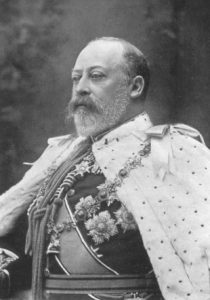
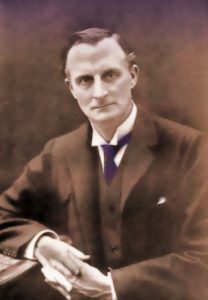
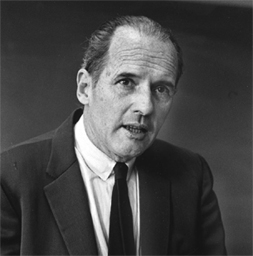


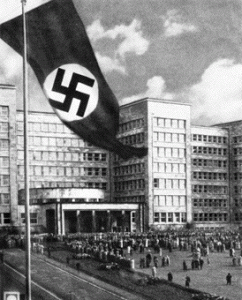

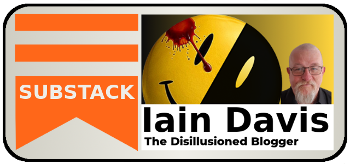





Be the first to comment on "New World Order War Profits"